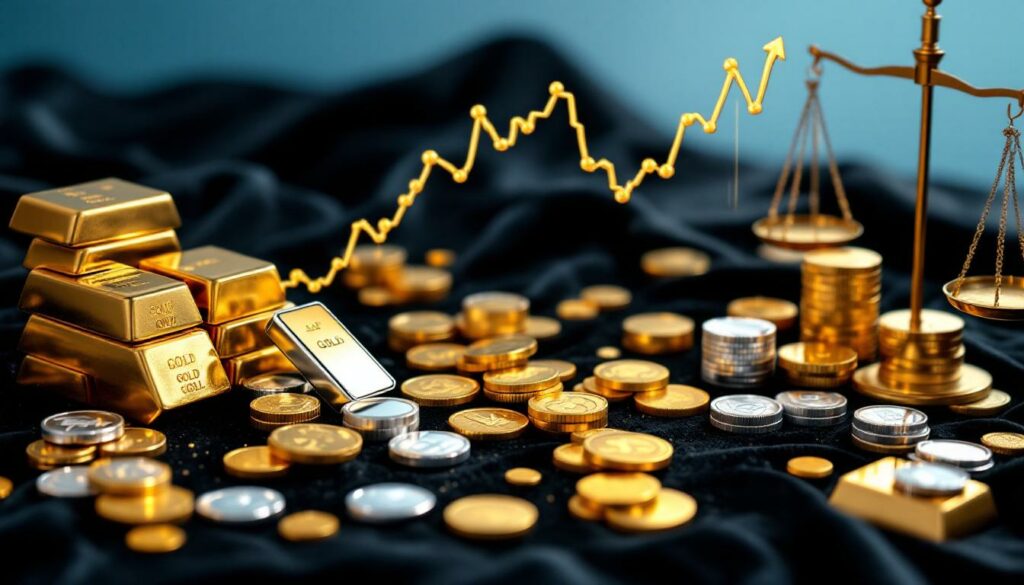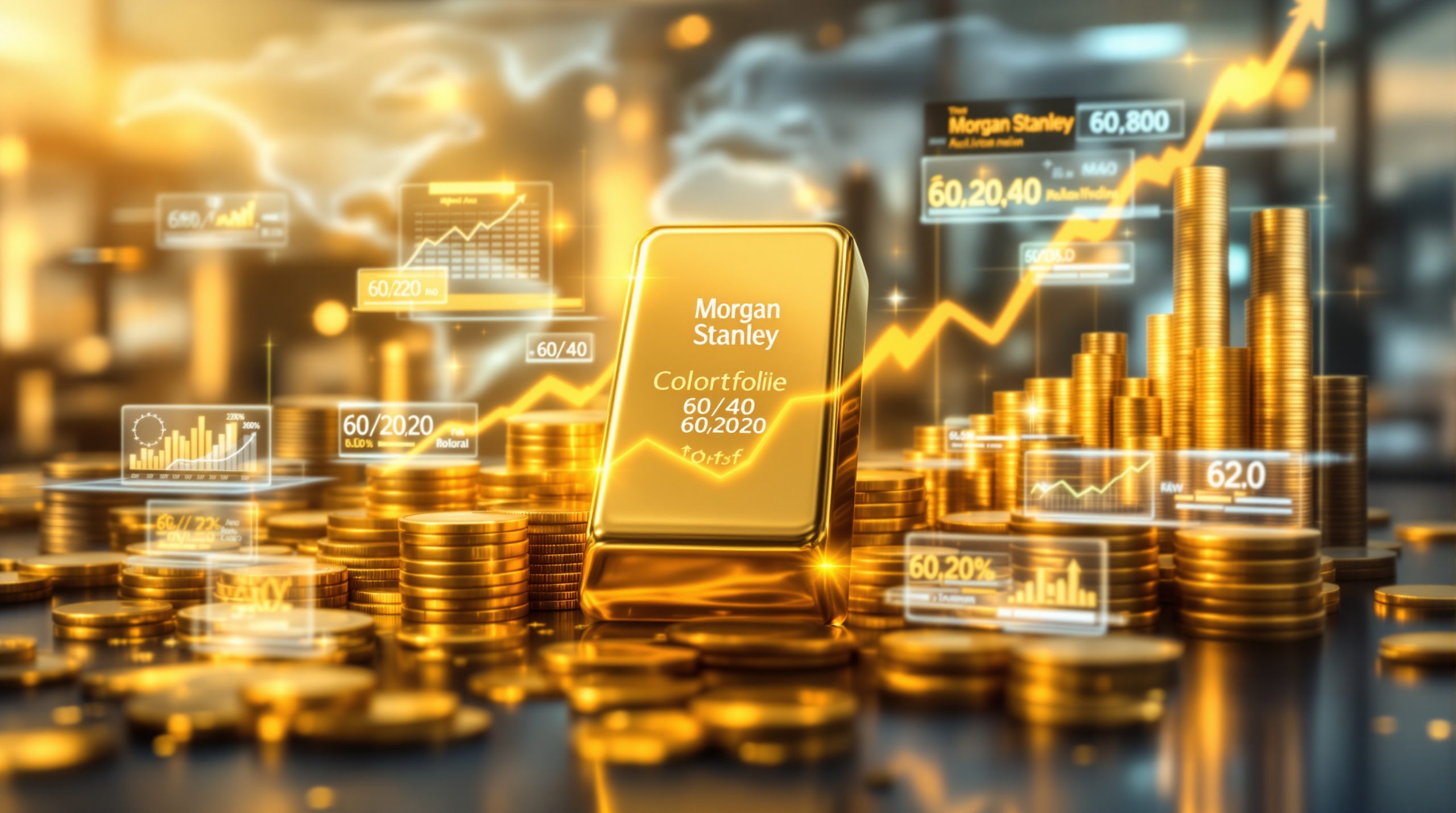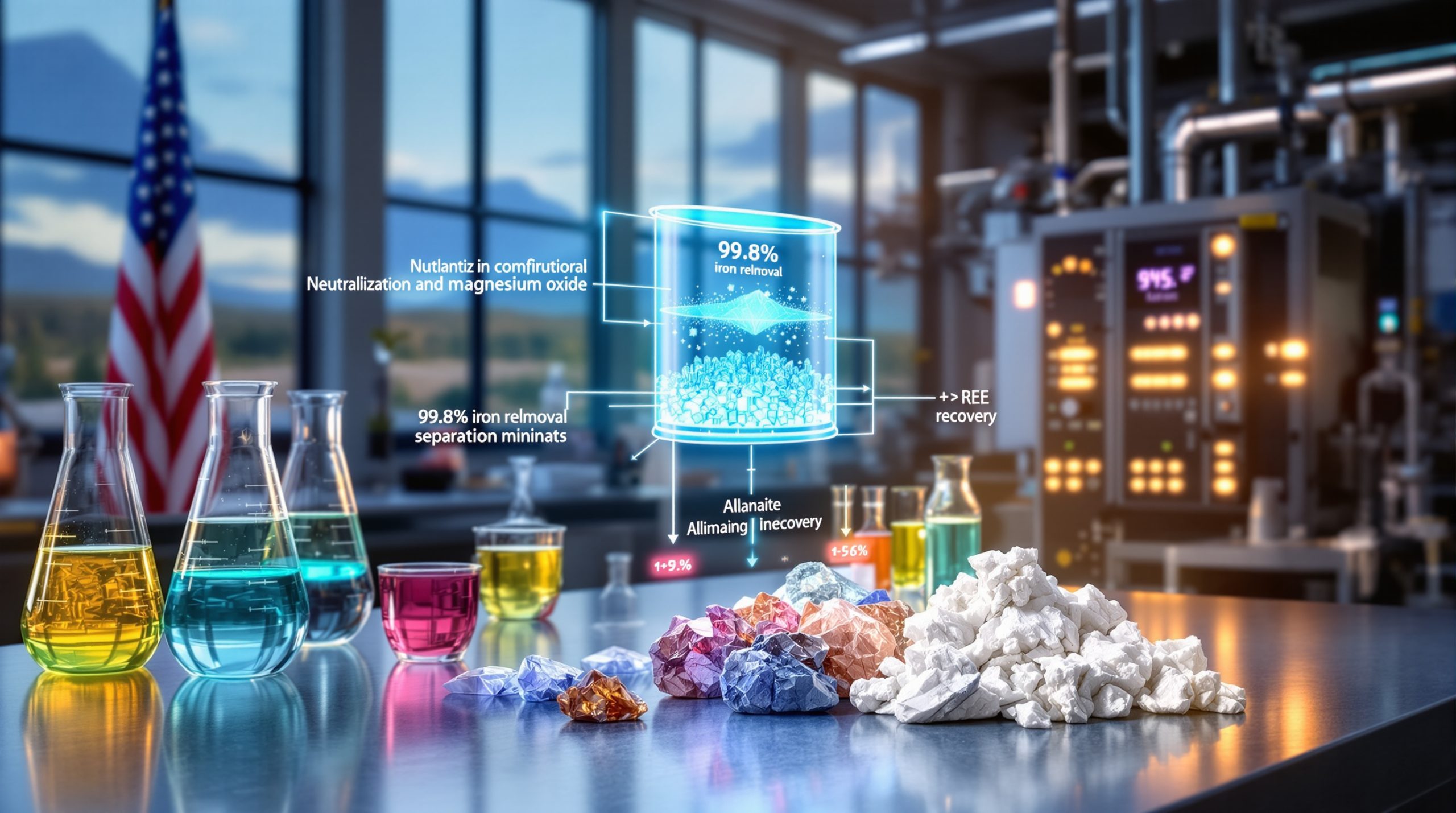What Makes Gold and Silver Enduring Stores of Value?
Throughout human history, gold and silver have maintained their status as premier stores of value, outlasting countless currencies, governments, and economic systems. This remarkable longevity isn't coincidental—it stems from inherent properties that align perfectly with the fundamental characteristics of sound money. Gold and silver as investments have consistently proven their worth across civilizations and through economic cycles.
"Gold is the king of money and the money of kings, and silver is its schizophrenic little brother."
– Bart Brands, Precious Metals Specialist at Gold Republic
The Historical Track Record of Precious Metals
Gold and silver have preserved wealth across millennia while fiat currencies have consistently failed. Archaeological discoveries regularly unearth precious metals in pristine condition despite being buried for thousands of years. This physical durability translates directly into economic durability, allowing these metals to transcend the rise and fall of empires.
"You can find old buried treasure in the ground for thousands of years, and it still looks beautiful as the day it was buried."
– Bart Brands
Unlike modern currencies that can be created with keystrokes, precious metals maintain natural scarcity that preserves purchasing power across generations. This scarcity isn't artificial or policy-dependent—it's rooted in geological reality. Recent gold price forecast data supports this enduring value proposition.
The Unique Properties That Define "Real Money"
What makes gold and silver true forms of money? They possess all essential attributes that economists have identified as necessary for sound currency:
- Durability: Resistant to corrosion, decay, and degradation
- Portability: High value-to-weight ratio, especially for gold
- Divisibility: Can be divided into smaller units without losing value
- Uniformity: Consistent in quality and composition
- Limited supply: Cannot be artificially expanded
- Intrinsic value: Desired for both monetary and non-monetary purposes
These properties have made precious metals the default monetary standard throughout civilization. Gold's exceptional resistance to oxidation means artifacts from ancient Egypt, Greece, and Rome remain virtually unchanged after thousands of years—a property unmatched by any paper asset.
The Psychological Connection to Precious Metals
Humans appear to have an innate attraction to gold and silver that transcends cultural boundaries. This universal appeal becomes especially evident when people physically interact with these metals—feeling their substantial weight, admiring their distinctive luster, and experiencing their unique tactile properties.
As Bart Brands notes, "They are magical. Both of them are magical and nobody thinks they're ugly." This psychological connection has remained remarkably constant throughout human history, suggesting a deeply rooted relationship between humans and these elements.
Central banks understand this enduring appeal. Despite having access to sophisticated financial instruments, they continue accumulating substantial gold reserves, with record‐high gold prices not deterring their purchases in recent years. This institutional confidence provides perhaps the strongest endorsement of gold's fundamental value.
How Do Gold and Silver Perform as Investments?
One of the most persistent criticisms of precious metals is that they "don't yield anything." Critics often dismiss gold and silver as relics with no place in modern investment portfolios. However, the historical performance data tells a very different story.
Debunking the "No Yield" Misconception
When measured properly, gold has delivered remarkable returns. Over the past quarter-century (2000-2025), gold has provided approximately 10% annual returns when priced in euros per kilogram. This represents a tenfold increase in value, with gold prices rising from roughly €9,500 per kilogram to €95,000 per kilogram during this period.
This performance contradicts the narrative that gold merely "sits there." In reality, gold has outperformed many traditional investments over various timeframes when measured consistently. The key insight is that gold's performance should be evaluated against currency depreciation rather than nominal interest rates. According to detailed gold prices analysis, this trend is likely to continue.
Comparative Performance Against Other Asset Classes
Recent performance metrics highlight gold's competitive advantage in the current market environment:
| Asset | Year-to-Date Performance (2025) |
|---|---|
| S&P 500 | 3.1% |
| Bitcoin | 13.6% |
| Gold (USD/oz) | 27.0% |
This data demonstrates that gold has significantly outperformed both traditional equities and cryptocurrency in the current market cycle. During periods of economic uncertainty and inflation concerns, gold often moves independently from conventional financial assets, enhancing its value as a portfolio diversifier.
"It is incredibly important to make sure that there is also some gold and some silver in your highly diversified portfolio."
– Bart Brands
Central Bank Acquisition Trends
Perhaps the most telling endorsement of gold's investment value comes from central banks themselves. These institutions have been purchasing gold at record levels for the past five years, accumulating substantial reserves despite having access to sophisticated financial instruments and investment strategies.
"Tell that to central bankers that have been buying record amounts of gold for the past four or five years."
– Bart Brands
This trend signals strong institutional confidence in gold's long-term value proposition. Central banks, with their extensive research capabilities and economic forecasting tools, continue to view gold as an essential reserve asset—particularly as concerns about currency stability and sovereign debt levels increase globally.
What Is the Gold-Silver Ratio and Why Does It Matter?
The gold-silver ratio—the amount of silver required to purchase one unit of gold—provides crucial insights for precious metals investors. This ratio has fluctuated throughout history, offering potential opportunities for strategic allocation between the two metals.
Understanding the Historical Context
Throughout most of recorded history (approximately 1,500 years), the gold-silver ratio ranged between 1:15 and 1:25. However, in recent decades, the average has expanded to approximately 1:60, with extreme spikes reaching beyond 1:100 during market dislocations.
In 2025, the ratio has been hovering around 1:105 (measured in euros per kilogram) for about three months. For perspective, the all-time high of 1:124 occurred during the COVID-19 pandemic. These extreme ratios (above 1:100) have only appeared about a dozen times in the past century, potentially signaling significant investment opportunities. For more comprehensive analysis, investors should review gold‐silver ratio insights.
Production Fundamentals and Supply Constraints
The natural mining ratio of gold to silver stands at approximately 1:8 to 1:9, meaning for every ounce of gold extracted, miners produce 8-9 ounces of silver. This geological reality establishes a baseline for understanding the relative supply of these metals.
However, the investment case becomes more compelling when considering consumption patterns:
- Approximately 50% of all silver production (4.5 out of 9 ounces) is consumed by industrial applications
- Of that industrial silver, about 2-3 ounces are used in such minute quantities that recovery becomes economically unfeasible at current prices
- These consumption patterns effectively remove significant portions of silver from circulation permanently
"For every ounce of gold, 9 oz of silver are mined… Half is used in industry, and much is non-recoverable."
– Bart Brands
Investment Implications of the Ratio
When the gold-silver ratio reaches historical extremes (above 1:100), it often signals a potential opportunity in silver markets. These anomalies suggest silver may be undervalued relative to gold, creating potential for mean reversion. Some analysts even predict a potential silver market squeeze as industrial and investment demand collide.
Savvy investors monitor this ratio to make strategic decisions about allocating between the two metals. When the ratio approaches historic highs, they might consider shifting some gold holdings to silver, anticipating that silver will outperform gold as the ratio normalizes.
The ratio's predictive power stems from its reflection of both mining economics and market psychology. Extreme readings typically coincide with periods of market stress when investors initially flee to gold's perceived safety before eventually recognizing silver's relative value opportunity.
How Should Investors Approach Buying, Storing, and Selling Precious Metals?
Investing in physical precious metals requires consideration of practical aspects beyond price performance. Developing a comprehensive strategy for acquisition, storage, and eventual liquidation helps maximize the benefits while minimizing costs and risks.
Physical Ownership Considerations
Direct ownership of gold and silver offers unique advantages including complete control, privacy, and independence from financial system risks. However, investors must evaluate several practical considerations:
- Premium costs: Physical metals typically trade at a premium above spot prices, with smaller units carrying higher percentage premiums
- Authentication concerns: Ensuring product authenticity through reputable dealers
- Insurance requirements: Protecting against theft, loss, or damage
- Storage security: Creating safe, discreet storage solutions
- Liquidity challenges: Understanding potential buy-sell spreads when liquidating
Home storage introduces security concerns and potential insurance complications, while professional vaulting services add recurring costs that impact overall investment returns. The optimal approach depends on investment size, security requirements, and access preferences. For newcomers to precious metals investing, getting started with gold and silver investing resources can provide valuable guidance.
Alternative Investment Vehicles
For investors seeking precious metals exposure without physical storage challenges, several options exist:
- Allocated storage programs: Professional vaulting with third-party verification and ownership documentation
- Exchange-traded funds (ETFs): Securities backed by physical metals that trade on stock exchanges
- Mining stocks: Equity in companies that produce precious metals, offering operational leverage
- Royalty and streaming companies: Firms that finance mining operations in exchange for future production at predetermined prices
- Futures contracts and options: Derivatives for sophisticated investors seeking price exposure without physical handling
Each approach offers different risk-reward profiles and varying degrees of direct exposure to metal price movements. Many investors employ a hybrid strategy, maintaining some physical holdings while using paper alternatives for tactical positioning.
Liquidity and Exit Strategy Planning
Establishing clear exit strategies before investing in precious metals helps avoid emotional decision-making during market volatility. Predetermined price targets, portfolio allocation limits, or specific economic indicators can serve as objective triggers for rebalancing.
Physical metals typically offer excellent liquidity in normal market conditions, though premiums and availability can fluctuate during periods of high demand. Working with established dealers with transparent pricing models helps ensure fair valuations when selling.
For larger holdings, developing relationships with multiple dealers provides competitive bidding options when liquidating. Additionally, understanding tax implications—including potential collectible capital gains rates in some jurisdictions—helps optimize after-tax returns.
What Makes Silver the "Schizophrenic Little Brother" of Gold?
Silver occupies a unique position in the precious metals landscape, exhibiting characteristics that make it both complementary to and distinct from gold. This dual nature creates both opportunities and challenges for investors.
The Dual Nature of Silver
Silver functions simultaneously as an industrial metal and a monetary asset, creating complex market dynamics. As Bart Brands colorfully describes it, silver is "the schizophrenic little brother of gold" due to this split personality.
"Silver is schizophrenic: industrial metal and monetary asset… Demand shifts between sectors create volatility."
– Bart Brands
This dual nature creates a distinctive volatility profile. During economic expansion, industrial demand can drive prices higher as manufacturing increases. During economic uncertainty, investment demand often surges as silver's monetary attributes gain prominence. This characteristic gives silver different price behavior than gold, with potentially larger percentage moves in both directions. For a comparative analysis, see why silver could be a better investment than gold.
Industrial Applications and Consumption
Silver's exceptional properties make it irreplaceable in numerous high-tech and industrial applications:
- Electrical conductivity: Silver is the best electrical conductor among all metals
- Optical reflectivity: Superior reflector of visible light (essential for solar panels)
- Antimicrobial properties: Powerful natural biocide used in medical applications
- Thermal conductivity: Excellent heat transfer characteristics for electronic applications
- Catalytic properties: Valuable in chemical reactions and industrial processes
These characteristics drive demand across electronics, photovoltaics, medical devices, water purification systems, and emerging technologies. Importantly, many applications use silver in such small quantities that recycling becomes economically unfeasible, effectively removing this silver from circulation permanently.
The industrial consumption pattern creates a fundamentally different supply dynamic than gold. While approximately 90% of all gold ever mined remains in circulation, silver experiences ongoing depletion through industrial uses. According to Bart Brands, around 50% of annual silver production is consumed industrially, with much of it in non-recoverable forms.
Investment Case for Silver
The combination of industrial consumption and monetary demand creates a compelling investment case for silver. With approximately half of annual production consumed by industry—often in non-recoverable forms—the available supply for investment purposes faces natural constraints.
When investment demand increases during economic uncertainty or inflation concerns, this limited supply can potentially lead to significant price appreciation. Silver's lower price point compared to gold also makes it more accessible to retail investors, potentially broadening its investment base during monetary crises.
The gold-silver ratio provides a key metric for evaluating silver's relative value. When this ratio reaches extreme levels (as it has recently at 1:105), it may indicate an attractive entry point for silver investments. The geological mining ratio of 1:8-9 suggests the recent market ratio of 1:105 represents a significant deviation from natural abundance.
"Silver has been money for 4,000 years … and I think it will return as money."
– Bart Brands
What Current Market Concerns Should Precious Metals Investors Monitor?
The macroeconomic and geopolitical landscape presents several developing trends that could significantly impact precious metals markets. Understanding these potential catalysts helps investors position portfolios strategically.
Monetary Policy Shifts and Interest Rate Dynamics
The relationship between central banks and governments creates potential monetary policy conflicts that could impact precious metals. Current tensions between the Federal Reserve and political administrations regarding interest rate decisions bear watching.
"I think the Fed is going to lose that fight, which means interest rates will drop, which means the printing presses might be turned on."
– Bart Brands
Historical patterns suggest that political pressure often eventually leads to monetary accommodation, particularly during economic slowdowns or election cycles. This dynamic typically benefits precious metals prices as interest rates decline and monetary expansion increases.
The precious metals market is particularly sensitive to real interest rates (nominal rates minus inflation), rather than nominal rates alone. When real rates are negative or declining, the opportunity cost of holding non-yielding assets like gold and silver diminishes, often supporting higher prices.
Quantitative Easing Projections
Market analysts are monitoring signals that could indicate a return to quantitative easing policies in major economies. Some projections suggest that by Q1 or Q2 of 2026, central banks in Europe, the United States, or both may implement new easing measures.
"I wouldn't be surprised if in the first or maybe latest the second quarter of 2026 we will see a form of quantitative easing either in Europe or in the United States but most likely in both."
– Bart Brands
Such policies have historically corresponded with significant precious metals price appreciation. Previous QE programs expanded central bank balance sheets while suppressing interest rates, creating favorable conditions for gold and silver. If these projections materialize, they could provide substantial tailwinds for precious metals investments.
Geopolitical Tensions and Their Monetary Motivations
Current geopolitical conflicts may have underlying monetary motivations as the existing global financial system shows increasing strain. Investors should consider whether international tensions serve as distractions from fundamental monetary issues or as catalysts for significant changes in the global financial architecture.
The increasing frequency of sanctions that weaponize financial systems has accelerated interest in alternative reserve assets outside traditional banking channels. Central banks in emerging markets have responded by diversifying reserves away from conventional sovereign debt and toward gold.
This trend toward financial sovereignty and monetary diversification could support structural demand for precious metals independent of inflation concerns or interest rate cycles. As the international monetary order evolves, gold and silver may benefit from their status as neutral assets outside any single nation's control.
How Can Investors Build a Strategic Precious Metals Portfolio?
Developing a thoughtful approach to precious metals investing requires balancing allocation size, acquisition strategy, and portfolio integration. A systematic framework helps maximize benefits while managing costs and risks.
Allocation Strategies and Diversification Principles
While optimal allocations vary based on individual circumstances, many financial advisors recommend a 5-15% portfolio allocation to precious metals as a foundation. This provides meaningful protection without overconcentration. Within this allocation, investors can further diversify across different forms of gold and silver based on their specific objectives.
Conservative investors might favor a gold-heavy approach, while those seeking higher potential returns might increase silver exposure—particularly when the gold-silver ratio indicates relative value opportunities. The appropriate balance depends on risk tolerance, time horizon, and views on economic conditions.
For investors new to the asset class, starting with a modest allocation and increasing it during favorable entry points often proves effective. This gradual approach allows time to become comfortable with precious metals' volatility characteristics while building knowledge about the market's unique dynamics.
Dollar-Cost Averaging vs. Lump-Sum Approaches
Ready to Discover Your Next Major Mining Opportunity?
Stay ahead of the market with real-time alerts on significant ASX mineral discoveries through Discovery Alert's proprietary Discovery IQ model, transforming complex mineral data into actionable investment insights. Explore Discovery Alert's dedicated discoveries page to understand how major mineral discoveries can lead to exceptional market returns, and begin your 30-day free trial today.




